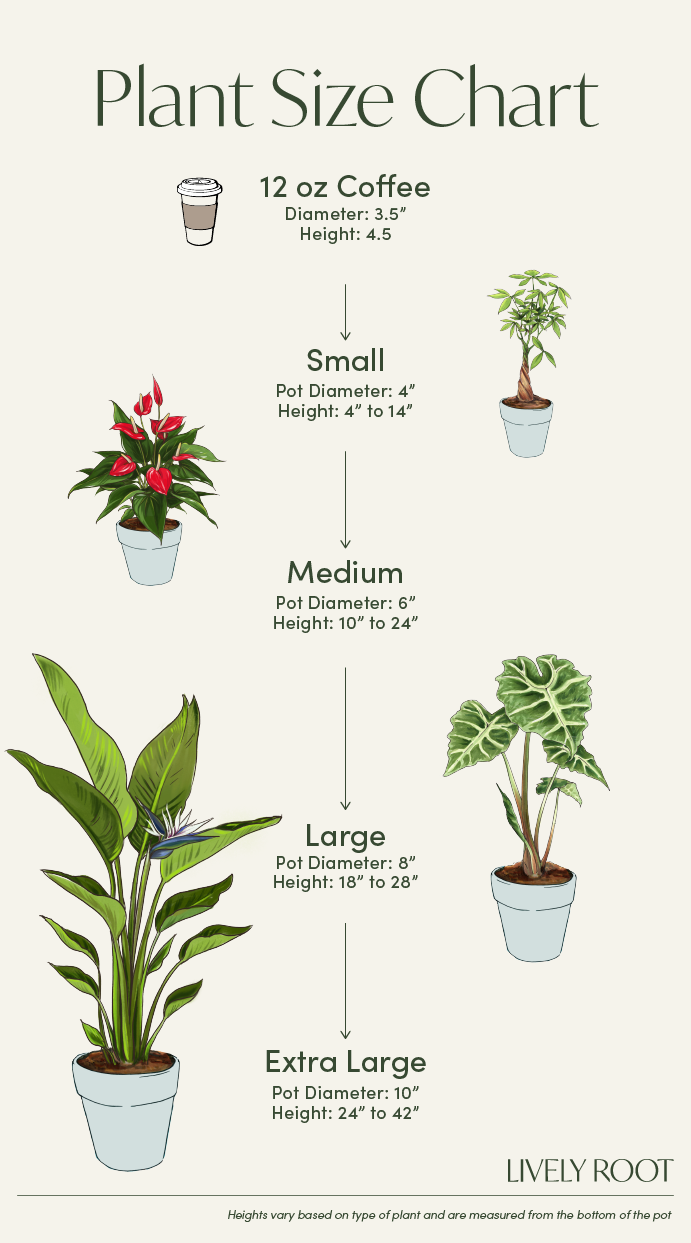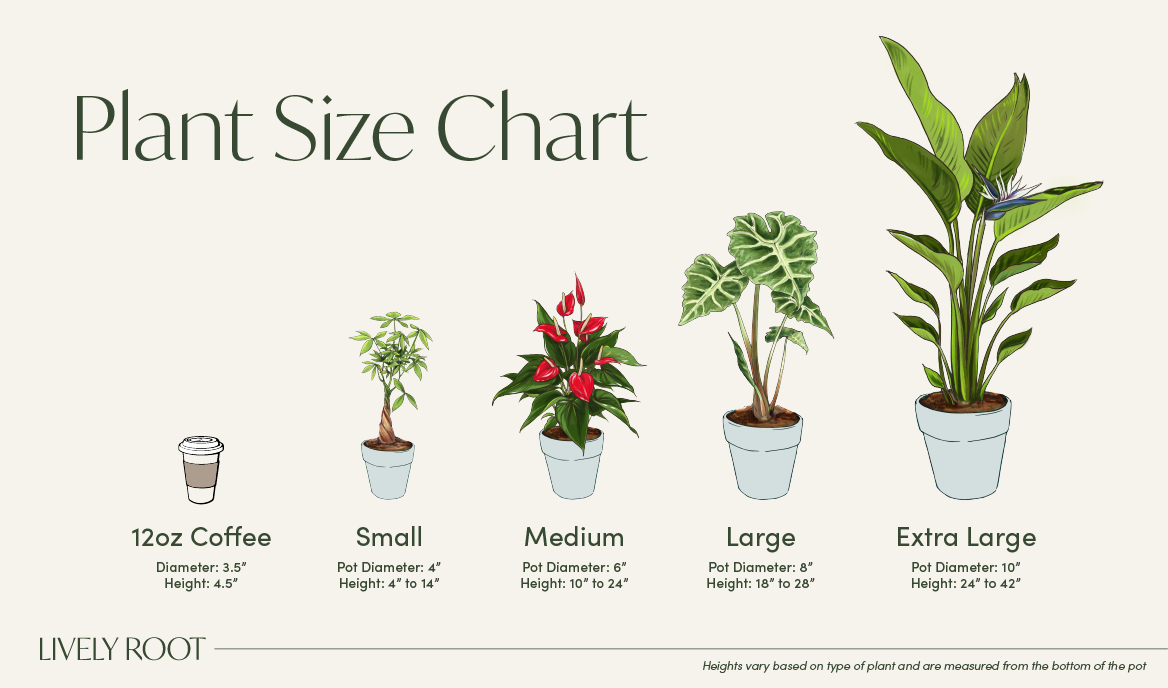

The Ensete (Red Banana Tree) grow in a spiral from the short central stem and resemble banana leaves, except they have beautiful reddish leaves with a robust red midrib. The more sunlight they receive, the richer in color they display in the summer months. Keep them in frost-free climates above 50°F. They do best when overwintered as an indoor plant or in a greenhouse. They enjoy a moderately dry climate with low humidity.
Ensete ventricosum 'Maurelii' Care Guide

The more sun you can provide, the better.
Be sure to water when you receive them. Enjoys being kept on the moist side but not soggy.
Requires no extra humidity.
Keep this plant in a room that is warm and humid with consistent temperatures between 75°F to 95°F.
Outside: Keep in full sun (6-8 hours) on a patio where nights are above 57°F.
Apply a balanced, liquid fertilizer especially formulated for indoor plants every month.
When receiving the Red Banana Tree, do not repot immediately but wait at least 6-12 months or if the roots are beginning to get crowded and growing through the drainage holes.
Repot in the spring, using a 2 inches bigger pot to keep the roots drier. (Too big of a planter could cause the soil to dry slower.)
Place a piece of screening at the bottom of the container over the drainage hole to secure the soil and allow to drain. Use a well-draining indoor potting mix with perlite to help with drainage.
Water your plant in the old pot before transferring over and let sit an hour.
Add soil to the bottom to elevate the root ball. Lift the plant and release the roots against the existing planter. Use a clean knife or garden trowel to wedge between the pot and the soil to loosen.
Inspect the root ball. Notice if there are any dead or rotting roots and trim off with sterile pruners. If the plant is rootbound, loosen the roots to alleviate continued encircling.
Ensure the plant is sitting about 1 inch below the edge of the pot to avoid water spillage. Add more soil and backfill around the sides by tamping down. Fill up to the soil line but not over.
Water thoroughly, leaving the soil damp but not soggy. If settling occurs, add more soil.
Water well to dampen the soil and let drain.
Gently wipe clean with a soft, damp cloth or paper towel. Work gently from the stem's base toward the leaf's tip, cleaning both sides at once. After cleaning the leaves, remove any dead leaves or debris on the surface of the soil.
Refreshen the soil mixture if needed.
Prune away damaged or diseased leaves down to the stem base with sterile pruners.
Propagate a Red Banana tree by division. When a sucker has produced on the parent plant, the "pups" will extract water and nutrients from the mother plant. It is best to perform the division when the pup grows up to one foot tall. Water your plant the night before to keep them well hydrated. Separate the parent plant from the pup and include their root system that should be establishing. Use a clean, sharp knife to separate the two. Put the new pup in a separate container with a well-draining mix using rooting hormone mixed into the soil. This added amendment will help prevent transplant shock. The new container shouldn't be more than two inches wider than the root system. Leave an inch below the top of the container to prevent water spillage. Water well and enough that the water drains out of the drainage holes. Keep the soil moist consistently while the roots establish. Your plants may experience some wilting for the next two weeks but continue to water consistently and give them the bright, indirect light and humidity requirements they need.










